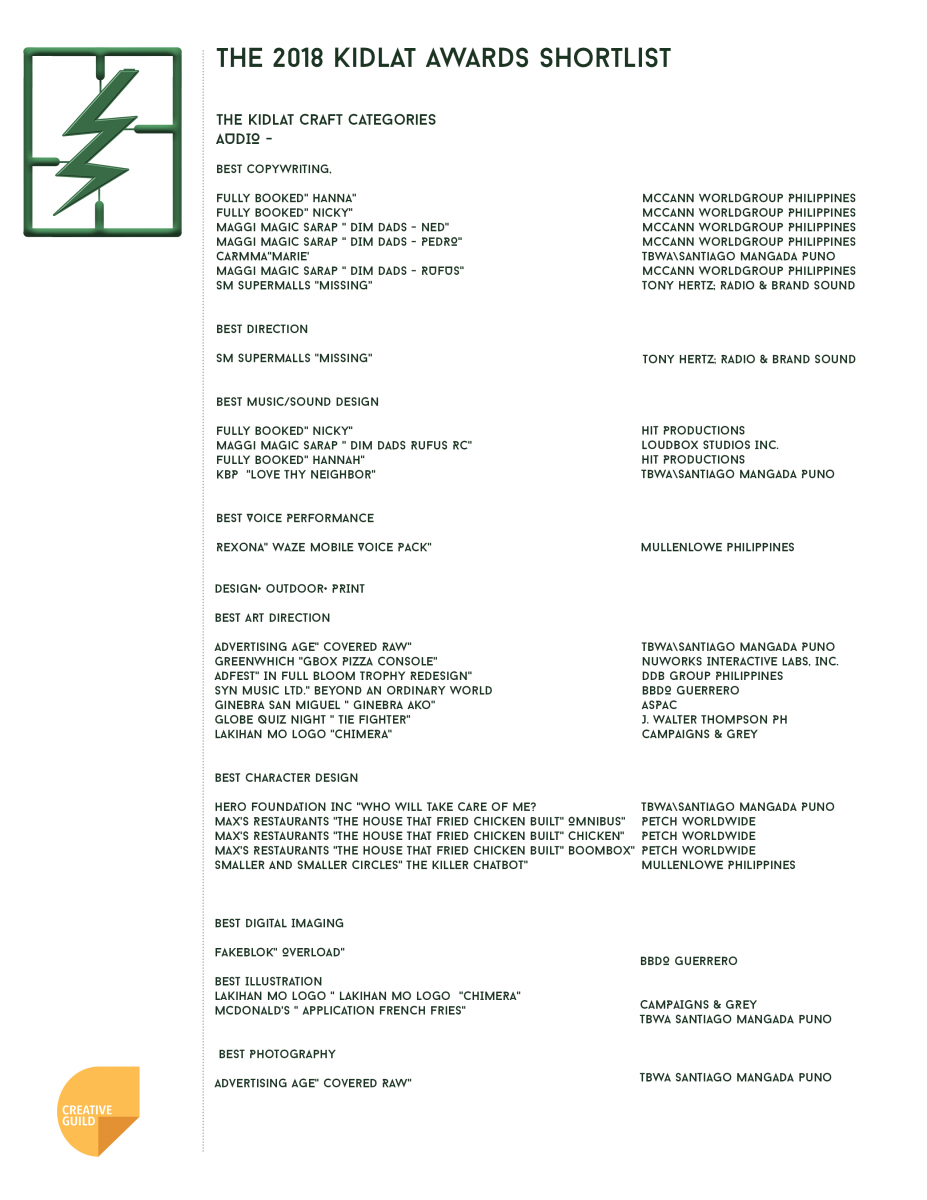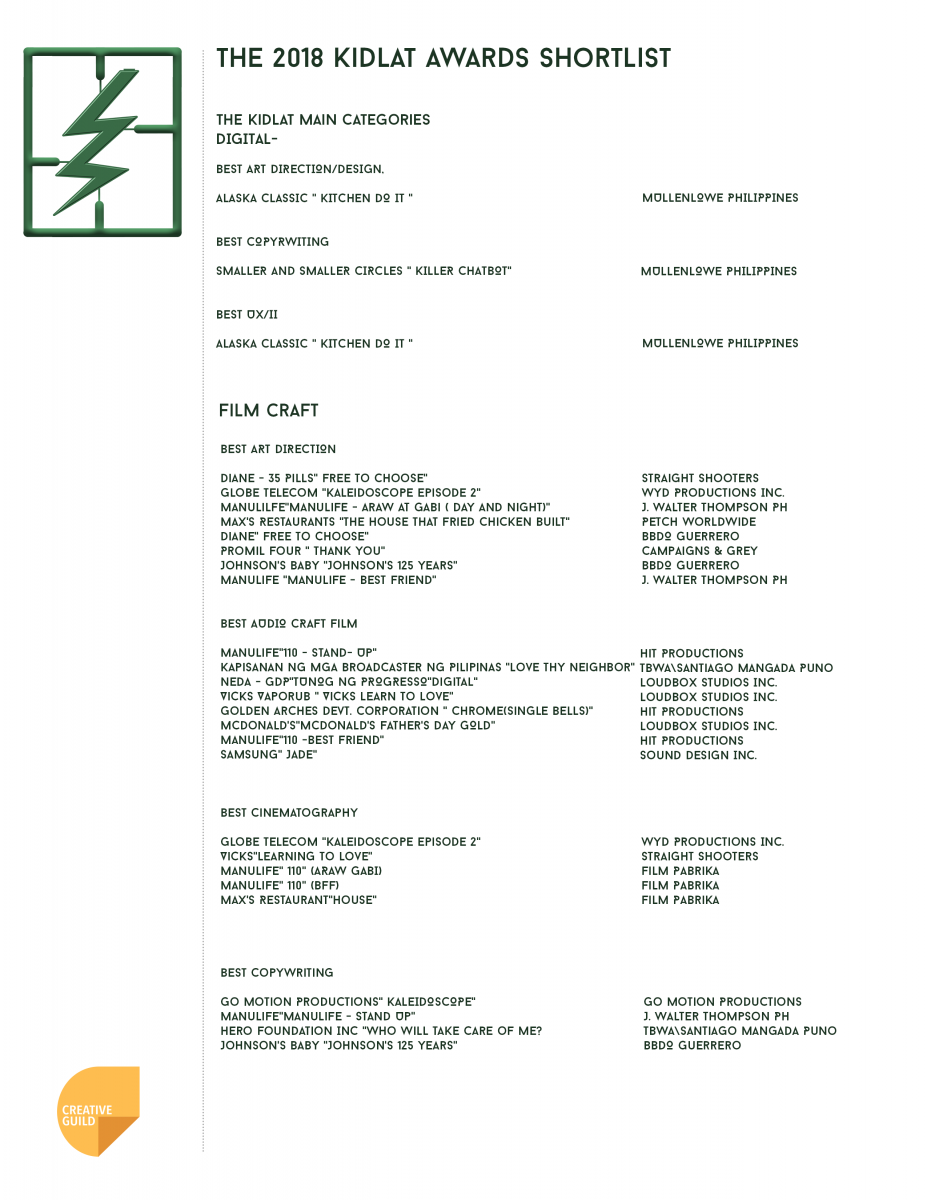MANILA – The shortlist for the 2018 Kidlat Awards in the Craft category have been released.
Vicks’ ‘Learning to Love’ by production house Straight Shooters has been shortlisted in Best Direction, Best Editing, Best Production Design, and Best Cinematography. It was also shortlisted in Best Audio Craft for Loudbox Studios, Inc.
For its part, Manulife and production house Film Pabrika were shortlisted for ‘110 (Stand Up)’ in Best Direction, Best Editing, and Best Audio Craft. J. Walter Thompson Philippines was shortlisted in Best Copywriting for the same campaign.
Sponsor
The complete Kidlat Craft shortlist:


The Kidlat Awards will be awarded on the evening of March 10 at Ad Summit Pilipinas 2018 in Subic.








